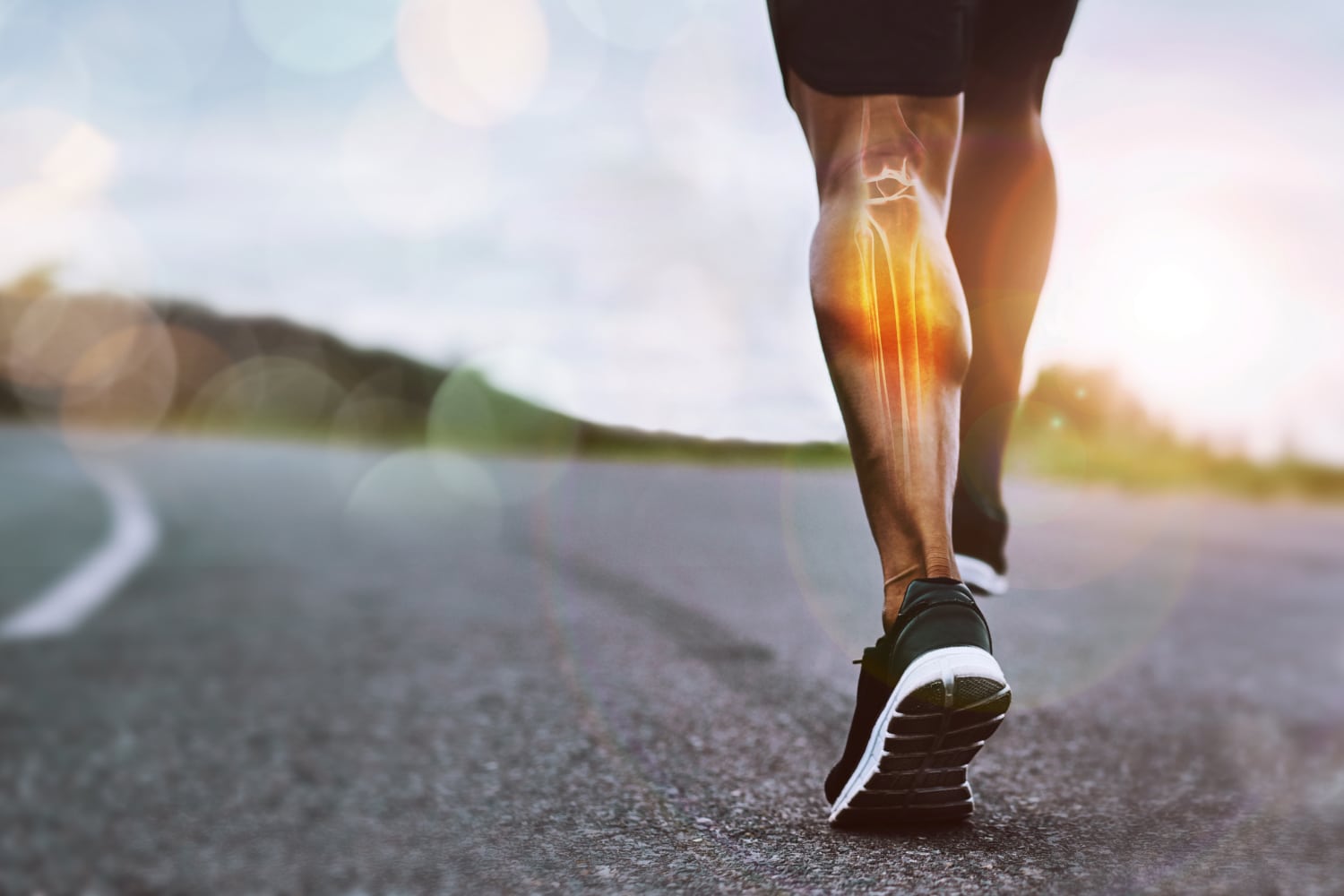Arthralgia vs. Arthritis: Understanding the Differences
|
| If you’ve ever had pain in one or multiple joints, you may have experienced tenderness, swelling, redness, aching, throbbing, or other types of discomfort. Some joint pain comes from inflammation in the cartilage that makes up the joint, while other pain comes from muscular, skeletal, or neuropathic causes. |
Let’s learn about the different types of joint pain and what separates arthralgia from arthritis.
How Is Arthralgia Different From Arthritis?
Oftentimes, people use arthritis and arthralgia interchangeably, but they are not quite the same thing. The best way to understand the difference between these two very similar words is to learn what the parts of each word mean. “Artho” comes from a Greek word that means “joint.” Any disease or disorder that begins with the prefix “artho” is referring to some kind of joint condition.
Any condition ending with “itis” indicates a health condition related to inflammation, and a condition ending with “algia” refers to an ache or pain in a specific area.
With this in mind, arthritis indicates inflammation in the joints, while arthralgia indicates pain or aching in the joints. Often these two terms are used interchangeably, but arthritis refers specifically to joint inflammation, while arthralgia refers to joint pain in general or joint pain that is not a result of inflammation.
What Are the Main Types of Arthritis?
Joint inflammation comes in many forms and has a number of potential causes. There are several hundred joints in the body, but the most commonly affected ones are in the spinal vertebrae (including in the neck), shoulders, hips, knees, hands, and feet.
Some types of arthritis come from getting older and from long-term wear-and-tear on joints. Other types of arthritis are autoimmune — they’re caused by the body’s immune system attacking the joints. Here are some common types of arthritis:
Osteoarthritis (OA) and Rheumatoid Arthritis (RA)

The most common form of arthritis is osteoarthritis, affecting close to one-third of Americans. OA will typically start to affect you slowly, sometimes over the course of several years. You might feel popping, clicking, or scraping sensations in your shoulders, hips, knees, ankles, wrists, fingers, or toes. OA is caused by aging as well as stress and pressure on the joints over time.
In contrast, RA is an autoimmune form of arthritis that doesn’t always have a clear trigger or cause. With RA, the body attacks the lining of the joints causing intense pain, redness, swelling, and inflammation.
A major difference between OA and RA is that RA usually hurts on both sides of the body — if there’s inflammation in one knee, the same pain is often felt in the other knee. In contrast, OA usually only hurts in joints where there’s been physical damage from injury or overuse.
Gout
Caused by a buildup of uric acid in the joints, gout is a condition that causes extreme flare-ups of pain in the big toe, sometimes so severe that even walking becomes impossible.
Consuming too much red meat, smoking, and obesity are all factors that seem to make gout more likely to develop. While gout is a type of arthritis, it can cause pain that isn’t directly due to inflammation, so it can also cause arthralgia.
Psoriatic Arthritis
This type of arthritis is related to psoriasis, an inflammatory skin condition that causes a painful, dry, red, scaly rash around the body. Psoriatic arthritis causes painful stiffness and inflammation in the joints, especially in the morning. If you already have psoriasis, you’re much more likely to develop psoriatic arthritis.
What Causes Arthralgia?
Because arthralgia just means “joint pain,” it’s a much more general term than arthritis. Arthralgia can feel like generalized pain, aching, or a stiff feeling.
There are potential causes of pain in the joints that aren’t necessarily related to arthritis, such as:
- An infection in the joint or another part of the body
- An injury to a joint, like a sprain
- Autoimmune disorders, including celiac disease, multiple sclerosis, and Crohn's disease
- An allergic reaction
- Degenerative diseases, like multiple sclerosis
- Overuse of a joint
While many of these could be caused by an early onset of arthritis, arthralgia is generally recognized as a symptom, not a condition, so there’s no test to determine if you have it — you either feel pain in your joints or you don’t. In contrast, arthritis is a diagnosable condition seen on an X-ray or MRI and detected during a physical examination or blood test.
What Can Help Arthralgia and Arthritis?
You can use many medical interventions to address arthralgia and arthritis, and some home remedies can ease discomfort for both.
The type of intervention that your healthcare provider will recommend will depend on what kind of arthritis or arthralgia you’re experiencing and what the root cause is. Minor aches and pains may only require some medicine and stretching, while severe joint damage might require much more aggressive treatment.
Medications
Many over-the-counter medicines can provide temporary relief from joint pain. NSAIDs (non-steroidal anti-inflammatory drugs) like ibuprofen and pain relievers like acetaminophen can be helpful and purchased just about anywhere.
A doctor can prescribe stronger pain medication, steroids, muscle relaxers, or nerve pain medication for more intense pain. It’s best to talk to your healthcare provider to find out what would work best for your condition and pain level.
Physical Therapy

If you’re experiencing joint pain from an injury, your doctor may consider referring you to a physical therapist for the rehabilitation of your joint. A physical therapist can work with you to strengthen the muscles surrounding your joint and teach you physical activities to promote healing.
You can also be given exercises to do at home to maintain healthy joints and specific instructions on what to do to prevent further injury.
Injections
If medication, physical therapy, or other minor interventions aren’t quite working, your doctor might recommend getting an injection of steroids. These shots insert a liquid that’s very similar to what’s already in the joints that can help lubricate them and lessen inflammation.
Surgery
More serious cases of joint pain, especially degenerative arthritis conditions like RA, might require a surgical operation like a joint replacement. Usually, these are a last resort, but they are sometimes necessary if the pain is severe enough.
Alternative Interventions
In addition to mainstream medical care, some alternative specialists can help you with joint pain. Seeing a chiropractor, acupuncturist, or massage therapist can provide further relaxation and promote well-being.
Topicals
Balms, creams, lotions, and rubbing oils are designed to ease feelings of discomfort in specific areas of the body. Some topical products incorporate medications like lidocaine to numb away pain or NSAIDs to lessen inflammation. Other topicals use plants or herbs to bring a calming sensation to the inflamed area.
Heat and Cold
Especially if the joint pain is the result of an injury, using ice is a great way to immediately bring down inflammation. Sometimes after periods of intense activity, using an ice pack can prevent a joint from getting too tender. Heat also effectively relaxes the muscles, tendons, and ligaments around the joints. Using a heating pad, taking a hot bath or shower, or getting in a jacuzzi are all ways to get the benefits of heat.
Stretching
This is one area where you want to be very careful! While stretching can generally help arthralgia, there are forms of arthritis that might become aggravated if you stretch a joint incorrectly. It’s helpful to talk to a physical therapist about what stretches would most benefit your particular pain and what to look out for.
Stay Active
Even if your joint pain started because of physical activity, there’s not much worse for the joints than inactivity. Try to stay as active as possible to promote blood flow, lubricated joints, and overall fitness.
Living With Painful Joints
Living with pain in your joints can make life more difficult. If you think you may have a joint condition, talk with your doctor about your pain so that you can get answers and find the right treatments that work for you. Don’t let sore, swollen joints slow you down.
Sources:
Osteoarthritis (OA) | Arthritis | CDC
A concise history of gout and hyperuricemia and their treatment | Arthritis Research & Therapy
Can Allergies Affect Joint Pain | OrthoBethesda












































